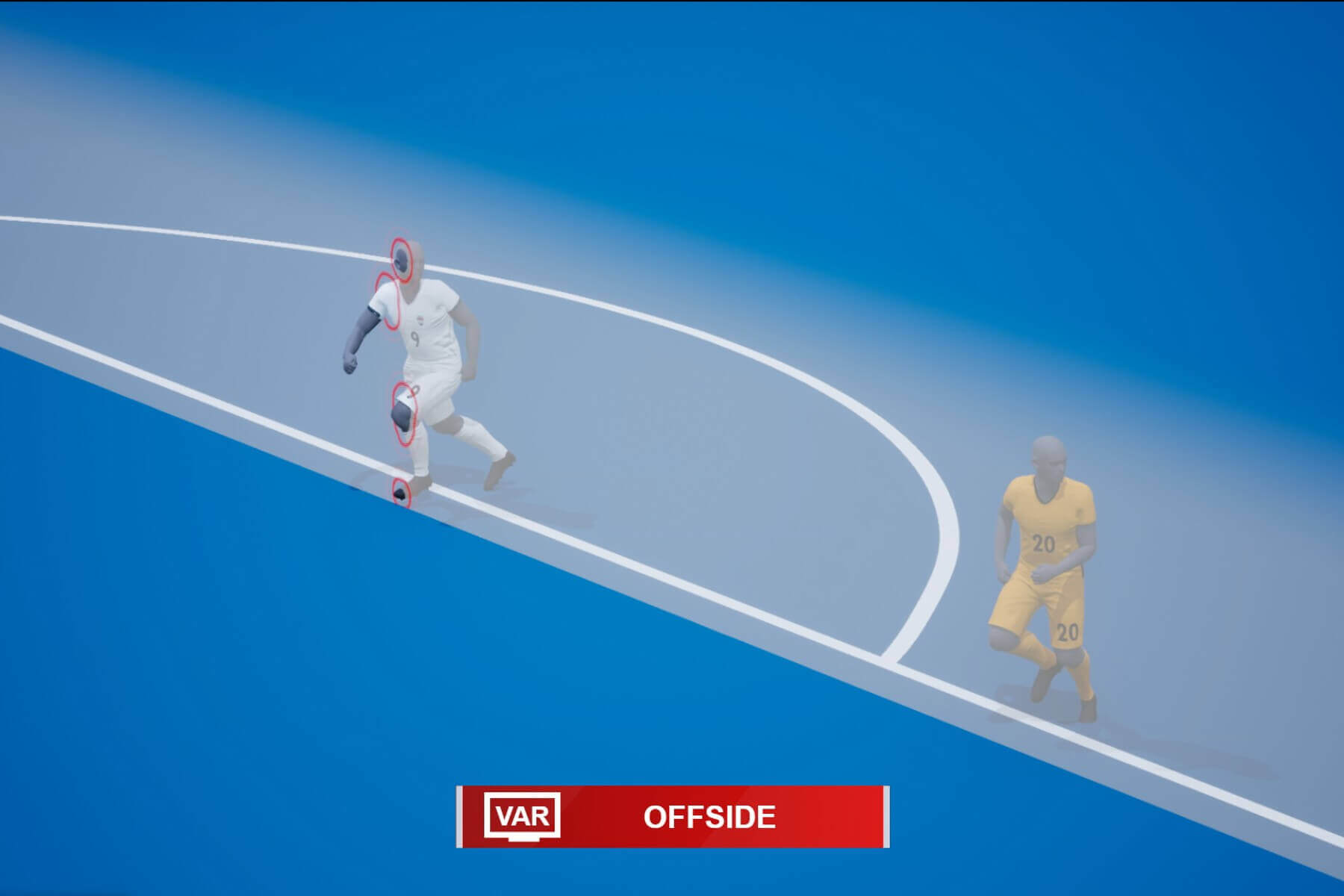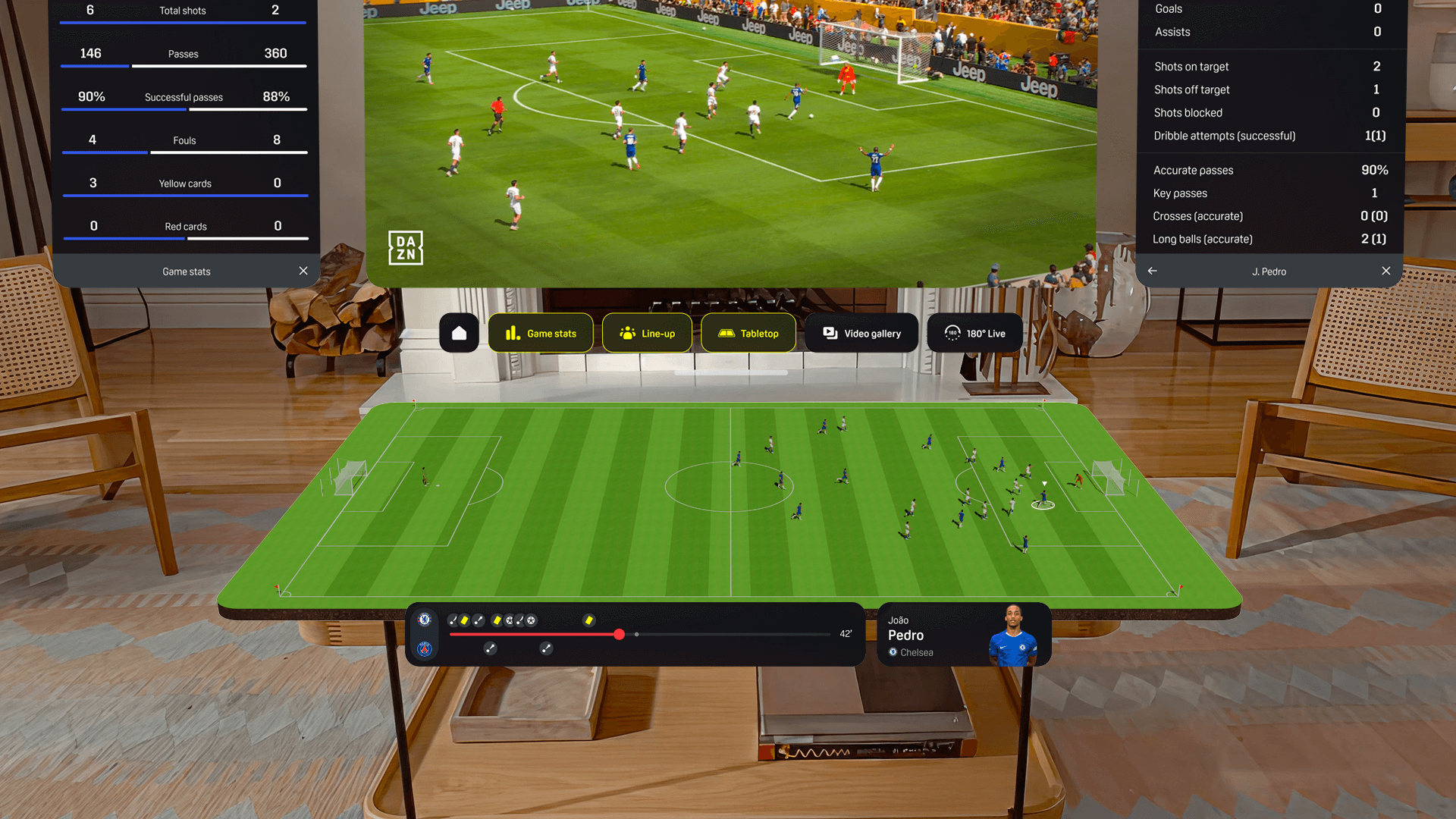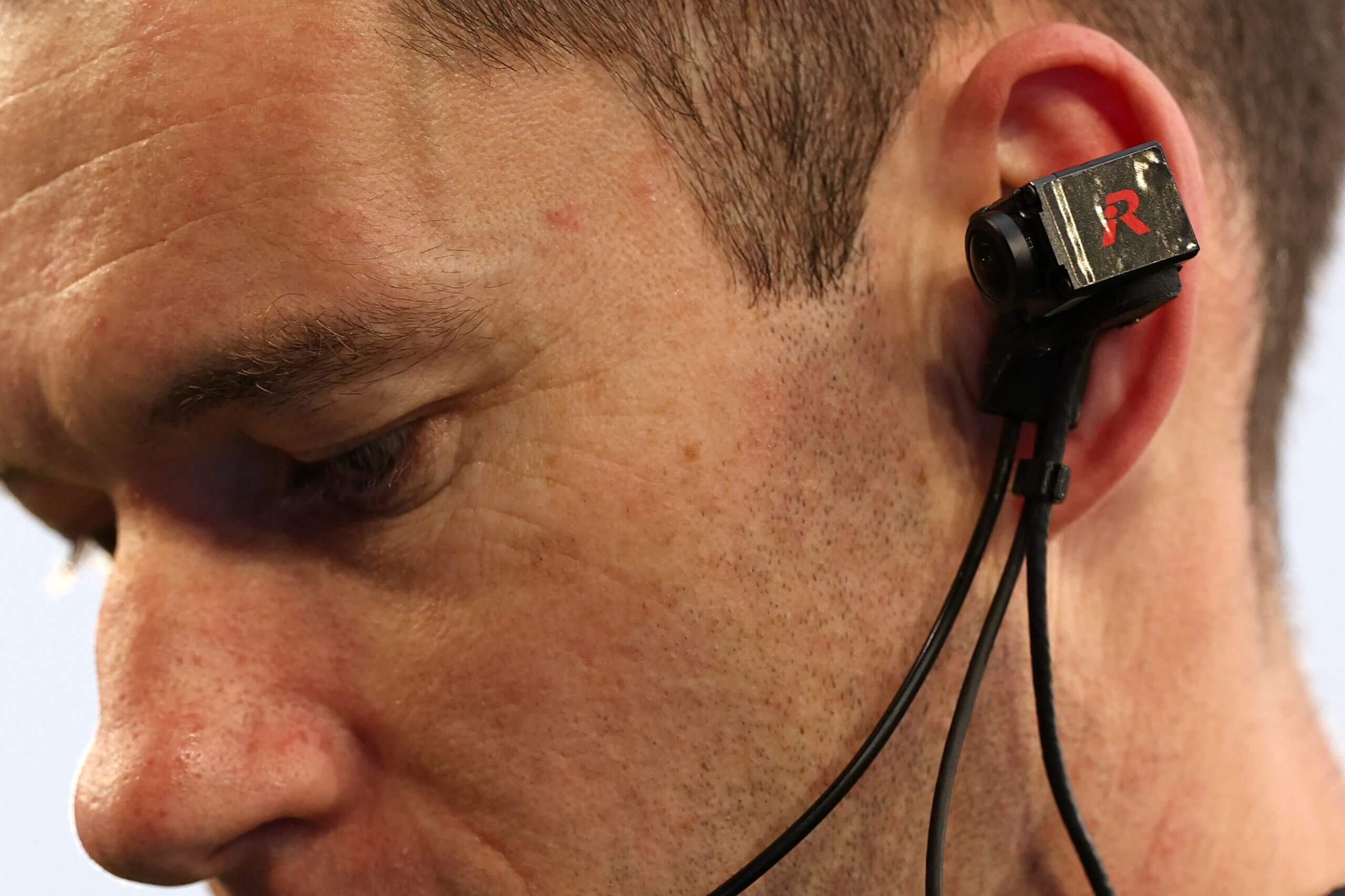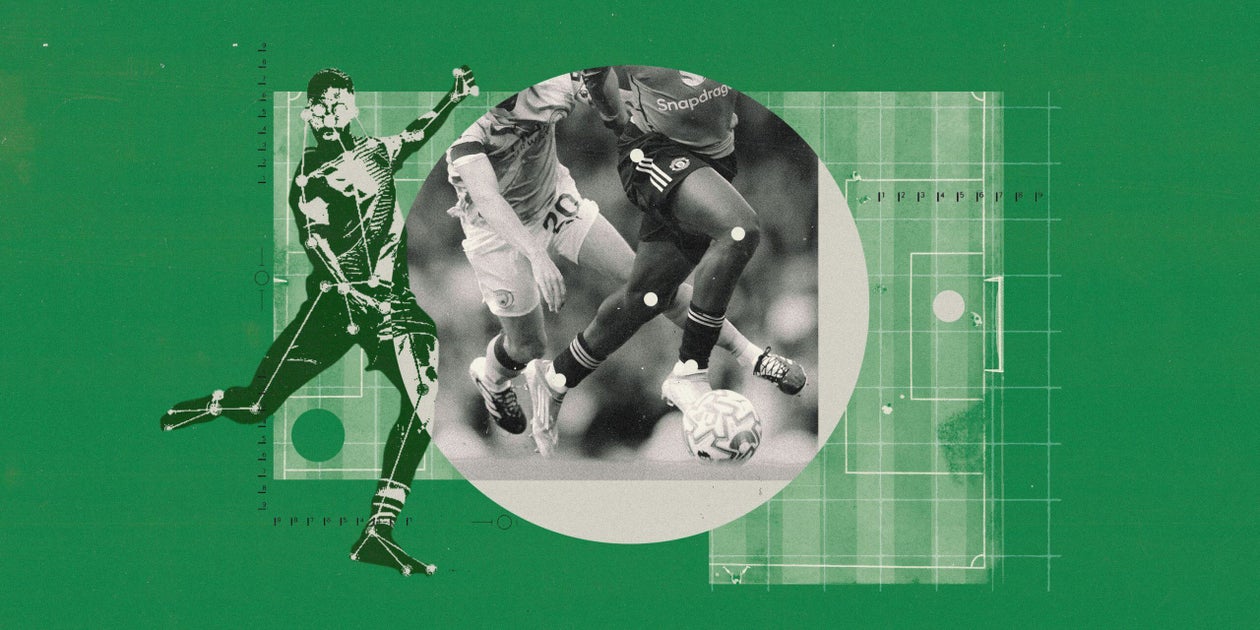Many frontiers have been crossed within football analytics.
It was not too long ago that clubs would be lucky to obtain the most basic event metrics, such as shots, passes, and corners. Fast forward to the modern day, and the granularity of football data now is eye-watering.
Players with GPS (Global Positioning System) vests are commonplace in the modern game as clubs monitor the speed, distance covered, accelerations and decelerations of each squad member in every training session and matchday.
‘Traditional’ tracking data has been integral for clubs to capture the position and movements of players, combining them with event metrics to produce detailed insights on an individual’s wider contribution through their off-ball running.
Where event metrics log hundreds of data points per game, tracking data takes that into the thousands or millions. For skeletal tracking, those data points are in the hundreds of millions for a single match.
Skeletal data records the biomechanics of the body, mapping an individual’s key joints — including their shoulders, hips, elbows, knees and ankles, as well as their head and eyes — to form a three-dimensional (3D) representation of an individual’s pose.
The principles of this technology have long been used in film production and video games to capture the realistic movements of an individual. Baseball and basketball have adopted this since the 2010s, but body pose data is comparatively new in football.

The typical set-up involves up to 30 dedicated in-stadium cameras to track 29 skeletal points on every player on the pitch. Where traditional tracking would monitor the location of a player at 25 frames per second, skeletal tracking can sharpen that lens up to 100 frames per second.
Skeletal tracking data has now been introduced by FIFA and UEFA for semi-automated offside technology (SAOT), combining body pose information with precise ball-tracking data to determine offside calls more objectively.
The technology was first rolled out during the 2022 World Cup in Qatar, but has since been used in the Champions League, Serie A, La Liga, and — from April 2025 — the Premier League.
Sports and Technology company Genius Sports is the official tracking provider for the Premier League through its Second Spectrum technology — and has been collecting skeletal data in England’s top division since October 2022.

SAOT was first used at the 2022 men’s World Cup in Qatar (Getty Images)
Rather than waste money on heavy-duty cameras, Genius has installed off-the-shelf iPhones — in waterproof cases — within each stadium that converge to track the movements of all players in an ultra-high frame rate.
“Previously, we had centre-of-mass tracking where we had one tag on a person,” says Matt Fleckenstein, chief product officer at Genius Sports. “You roughly knew where the player was on the pitch, and how fast they were running and what direction — but you really couldn’t extrapolate the information out further.
“Now we’ve got 30 different views that can constantly be captured. As you get all of those inputs, you start to triangulate any view from multiple camera angles, and that’s what allows you to then capture the 3D recreation in real time.”
Beyond offside calls, one key application of using this data has been towards fans’ live match experience. Technology company Meta partnered with sports entertainment platform DAZN during the Club World Cup to provide immersive coverage of the tournament using the Meta Quest virtual reality headset.
In addition to a 180-degree live video feed, Meta was able to use skeletal tracking to create a virtual recreation of all 22 players on a 3D tabletop — synchronised with the live game — as though you are watching a game of Subbuteo come to life.

“Nothing stops you from choosing any viewing angle that you want, because it’s digitally created using data — there’s no fixed camera angle,” said Marc Lange, executive vice president of product marketing and strategy at DAZN.
“You could give full control to a user and select a particular perspective — so can we replay a goal from the striker’s eyes or the goalkeeper’s eyes? When somebody says, ‘That was an easy shot’, well, see it from (Lionel) Messi’s eyes, would you have scored that goal?”
DAZN’s collaboration with Meta has sparked further opportunities for the future, with conversations to work with Europe’s top domestic leagues to provide a similar offering to the fans’ live experience. The technology is advancing so quickly that watching a near-perfect representation of your favourite player from the angle the viewer requires is becoming a reality.
“We are exploring other technologies like volumetric video, which comes from the movie industry,” Lange says. “You can capture a full person with 100 cameras and create a life-like avatar that looks exactly like the person — and you can animate this. It is very resource-intensive, so maybe it does not lend itself to live production, but the technology is evolving.”
Genius Sports highlight that their latest innovation uses 3D mesh tracking to extend beyond those 29 skeletal points — using their iPhones to look at up to 10,000 surface points on each player at more than 200 times per second.
“You can get a finer-grained kind of detail with this tracking,” says Fleckenstein. “A good example of that is our semi-assisted offside technology that we’re doing with the Premier League, where you may need to know end-of-toenail level of detail.”
The outcome of this analysis means that it is possible to create a high-resolution “digital twin” of the game, with Genius’s immersive 3D replay technology allowing you to accurately position yourself through the eyes of a specific player at the moment they make a certain action.
“You’ll hear LeBron James talk about using our technology to improve his shooting,” says Fleckenstein.
“He mentioned it last season about using it to improve his three-point shooting on the left side of the floor. So, you want to be able to see dozens or hundreds of examples of you shooting the ball from other parts of the floor where your shooting percentage is much better, and then comparing it to the left side of the floor.”

(Adrian Dennis/AFP via Getty Images)
Sky Sports’ Monday Night Football analysis used an early iteration of this technology when Jamie Carragher unpicked a goal scored by Pierre-Emerick Aubameyang against Everton in 2020. For coaches or analysts, it allows you to work with players and relive a sequence of play from a first-person perspective — talking through their decision-making in real-time.
“The players like it because they feel like their coach is constantly telling them what they could have done, from looking at one broadcast view,” says Fleckenstein. “And players are quick to say that coaches could not see what they were seeing.”
Danish Superliga club Viborg have used Genius’s 3D replays to open conversations between players and staff, while Nottingham Forest have been keen advocates of the technology to inform coaches of players’ body shape — particularly from set-piece analysis.
“Looking back at key sequences or set plays in 3D is what folks are starting to do more,” says Fleckenstein. “But it’s also valuable to look at key sequences of your upcoming opponent, and have an immersive view of these set plays from their perspective.”
How this technology can be leveraged to help in the transfer window is where things could get particularly fun.
Many clubs are now integrating ‘traditional’ tracking data with event data to create bespoke metrics that aid their recruitment process, but skeletal tracking would add a level of detail that could leave few, if any, stones unturned on a player’s attributes.
If you really want to profile an old-school ‘back-to-goal’ striker who can use their elbows to hold off an opposition centre-back and drag their team upfield, then there is a realistic possibility that you could establish that shortlist using data alone.
The difficulty for clubs is obtaining such detailed data on a broader scale.
Working with tracking company Hawk-Eye Innovations, FIFA has its own dedicated Research & Development team looking to transform these dense datasets into meaningful insights for coaches, medical staff, and match officials.
To advance this access to the data, FIFA’s innovation programme released a competition this year in collaboration with the Federal Institute of Technology Zurich, challenging individuals to generate skeletal tracking data using only broadcast footage (i.e., television coverage).
Executing this approach to accurately estimate body pose information from a single camera is a huge challenge. If anyone were successful in doing so, clubs could fully integrate skeletal tracking within their recruitment processes — allowing them to find that back-to-goal striker by scouring multiple leagues worldwide.
Still, the ability to process such granular data from a single game is now well-established, tracking every twist and turn that a player makes with astounding accuracy.
The only thing slowing down further progress is the limitation of the human imagination.
(Illustration: Kelsea Petersen / The Athletic; Michael Regan / Getty)
